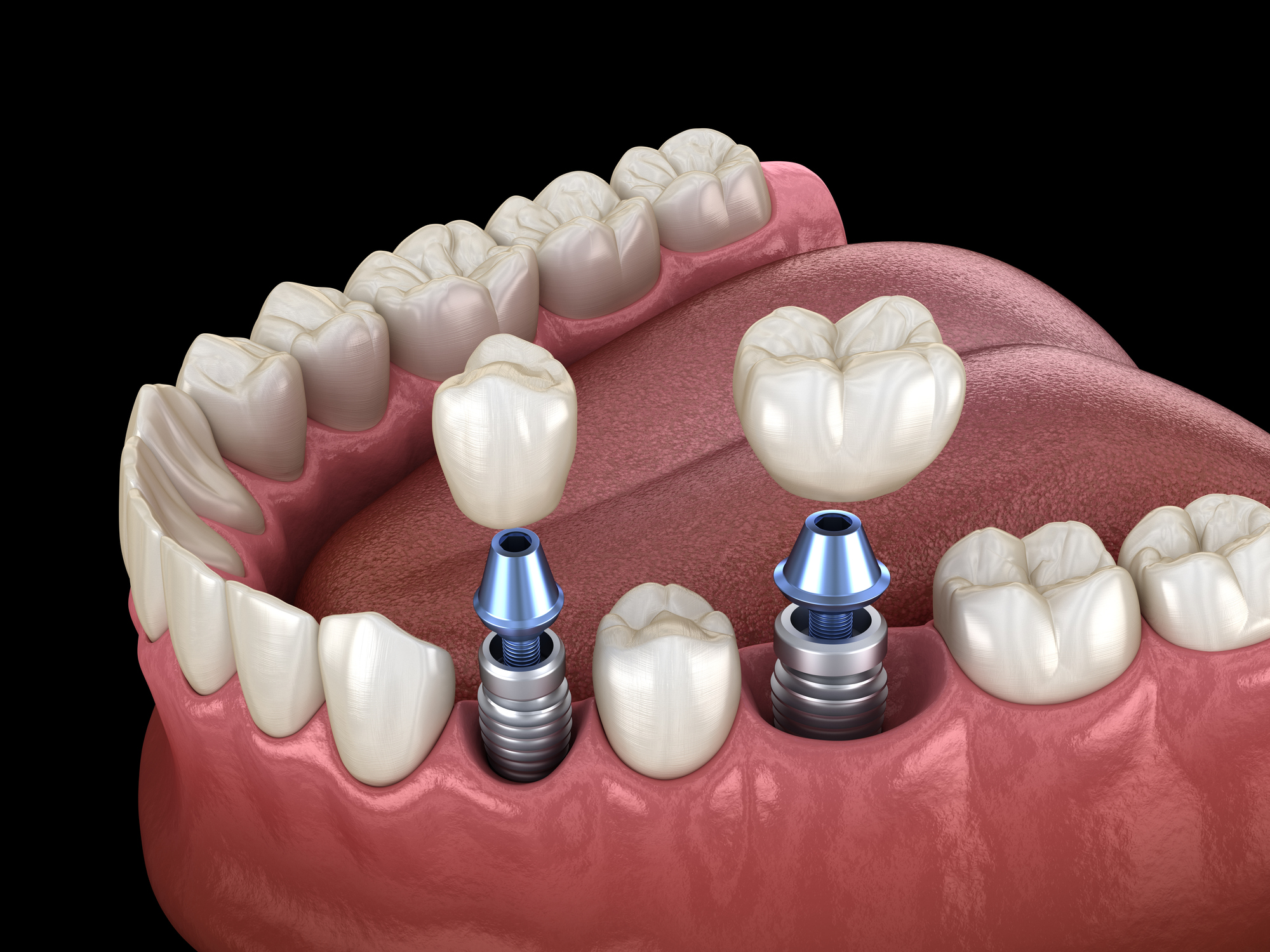How Dental Sense can Save You Time, Stress, and Money.
How Dental Sense can Save You Time, Stress, and Money.
Blog Article
Dental Sense Fundamentals Explained
Table of ContentsA Biased View of Dental SenseDental Sense Things To Know Before You BuyA Biased View of Dental SenseOur Dental Sense Ideas
are medical gadgets surgically dental implanted right into the jaw to bring back a person's ability to eat or their look. They supply assistance for artificial (phony) teeth, such as crowns, bridges, or dentures. When a tooth is shed because of injury or illness, a person can experience complications such as fast bone loss, malfunctioning speech, or modifications to chewing patterns that cause pain.Dental implant systems are composed of an oral implant body and dental implant joint and may also consist of an abutment fixation screw. Cosmetic dentistry services. The oral implant body is surgically put in the jawbone instead of the tooth's root. The dental implant joint is normally connected to the dental implant body by the abutment addiction screw and prolongs via periodontals into the mouth to sustain the attached fabricated teeth
(https://www.avitop.com/cs/members/dentalsense1.aspx)Framework of The Oral Implant System selecting dental implants, speak with your dental service provider regarding the potential advantages and threats, and whether you are a prospect for the procedure. Things to think about: Your general health is an essential element in identifying whether you are a good prospect for oral implants, how much time it will require to recover, and the length of time the implant might stay in location.
Cigarette smoking might impact the healing procedure and reduce the long-lasting success of the implant. The recovery process for the dental implant body may take several months or longer, throughout which time you generally have a temporary joint instead of the tooth. the oral implant procedure: Carefully adhere to the oral health directions offered to you by your oral copyright.
All About Dental Sense
Implant failure can lead to the demand for one more procedure to take care of or change the implant system. Brings back the capacity to chew Recovers cosmetic appearance Assists maintain the jawbone from shrinking due to bone loss Protects the wellness of the surrounding bone and periodontals Aids maintain adjacent (close-by) teeth steady Boosts lifestyle Damage to surrounding all-natural teeth throughout implant positioning Injury to the surrounding cells during surgical treatment, such as sinus opening Injury throughout surgery (for example, crack of bordering jawbone) Inadequate function, such as feeling like the teeth do not bite together usually An experience that the tooth is loose or twisting in place resulting from an abutment screw loosening Implant body failure (looseness of the implant body) as a result of systemic infection, which might be most likely in clients with unrestrained diabetes mellitus as a result of neighborhood infection in bone and gums sustaining the dental implant body as a result of postponed recovery, which might be more probable in individuals who smoke Problem cleaning up the periodontals around the implant, causing inadequate dental health Unattended gum condition Post-surgical feeling numb as a result of nerve impingement or damages Always inform healthcare companies and imaging specialists that you have dental implants before any kind of magnetic vibration imaging (MRI) or x-ray treatments.
FDA is not mindful of any negative events reported for MRI or x-ray procedures with oral implants. Dental implants systems are generally made of products that adhere to worldwide consensus criteria of the International Organization for Standardization (ISO) or ASTM International. These standards have information of what makes a risk-free material.

An oral implant is a structure that replaces a missing out on tooth. With screw-like tools, the surgeon inserts an implant into the jawbone, and it acts as a support for a fabricated tooth, called a crown.
Dental Sense Things To Know Before You Buy
Some people are not eligible for dental implant surgery. It is for dental surgeons to operate individuals with: intense illnessuncontrollable metabolic diseasebone or soft tissue illness or infectionIf these issues are fixed, a person can have the surgical procedure. In, oral specialists abstain from operating individuals with: If individuals with any of the above go through dental implant surgical treatment, there is a higher threat of the dental implant stopping working.

Dental dental check implant surgical procedure is a customized procedure. It's not the very same for everyone. However the complying with offers a basic overview of what you can expect your dental professional, dental surgeon, periodontist or prosthodontist to do: Place the implant surgically. Offer you time to heal. Connect the blog post and last crown, bridge or denture.
Next, your cosmetic surgeon will very carefully put the dental implant into your jaw. Lastly, your cosmetic surgeon will reposition your periodontals and shut the laceration with stitches. If your dental implant is near the front of your mouth, your dentist will certainly make a short-lived tooth for you to put on up until you heal. In this way, you won't have a void in your smile while you recuperate.
The Buzz on Dental Sense
Your supplier can tell you what to anticipate in your situation. Throughout the healing stage, your jawbone should fuse to the oral implant. This process, called osseointegration, is critical for stability and lasting success. This process can take anywhere from 3 to 9 months. In many cases, it might take longer.
Once your implant heals, your dental practitioner can attach the joint (tiny connector message) and your last repair (crown, bridge or denture). This normally takes regarding one hour to finish and may require a 2nd minor surgical treatment. You should not really feel any pain throughout your oral implant treatment because your supplier will certainly use medicine to numb your periodontals.
Report this page